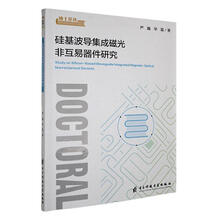Chapter I Eu3+-activated red phosphors for white light-emitting diodes
1.1 Eu3+-activated double molybdates red phosphors for near-UV LED chips
1.1.1 Introduction
Since Nakamura et al. fabricated a blue-emitting GaN light-emitting diode (LED) in 1993 and the first commercial w-LED solid-state lighting was developed using this blue-emitting LED in 1997, more and more interest paid on GaN-based white light-emitting diodes (w-LEDs). Such w-LEDs have many advantages, such as high efficiency, long lifetime, environmental friendliness, and so on. Therefore, they attracted increasing attention to replacing traditional solid-state lighting. This technology is expected to reduce energy consumption in the lighting sector by 15% in 2020 and by 40% in 2030—saving 261 TWh in 2030 alone, and its worth is over US$26 billion in savings at today’s energy prices. The worth is equivalent to the current total energy consumption of about 24 million homes in the United States. Furthermore, with the given mix of power plants, these energy savings would reduce greenhouse gas emissions by roughly 180 million tons of CO2. In October 2014, Isamu, Hiroshi and Shuji jointly won the Nobel Prize in Physics because of their successful and creative work in “the invention of efficient blue light-emitting diodes which has enabled bright and energy-saving white light sources” since the early 1990s.
At present, these w-LEDs are obtained mainly by combining the 465 nm blue-emitting InGaN LEDs with broad-band yellow-emitting phosphor, such as Y3Al5O12:Ce3+ (YAG). Additionally, white light can be produced by varieties of other approaches, such as by combining discrete blue, green and red LEDs or by mixing blue, green and red phosphors in one LED. Presently, the emission bands of LEDs are shifted to the near-UV range of around 400 nm, because this wavelength can offer a higher efficiency solid-state lighting. The current phosphors for near-UV GaN-based LEDs are BaMgAl10O17:Eu2+ for blue, ZnS:(Cu+, Al3+) for green, and Y2O2S:Eu3+ for red. However, the efficiency of the Y2O2S:Eu3+ red phosphor is about 8 times less than that of the blue and green phosphors, and the lifetime of Y2O2S:Eu3+ is inadequate under UV irradiation. Therefore, it is urgent to find new red phosphors which can be excited in the near-UV range around 400 nm.
A suitable red-emitting UV-LED phosphor should meet the following necessary conditions in general: the host is stable, the phosphor exhibits strong and broad absorption around 400 nm (LED emission wavelength), and the phosphor shows strong emission under 400 nm excitation as well as with the chromaticity coordinates near the NTSC (National Television Standard Committee) standard values. To find novel efficient red-emitting LED phosphors, in this chapter, Eu3+-activated double molybdates and NaLa(MoO4)2:xEu3+ were prepared in terms of the following considerations. Firstly, the double molybdates AB(MoO4)2 (A = Li+, Na+, K+, Rb+, Cs+; B = trivalent rare-earth ions) which share scheelite-like (CaWO4) iso-structure, show excellent thermal and hydrolytic stability and were considered to be efficient luminescent hosts. Secondly, it is well known that Eu3+ ions exhibit strong absorption at about 395 nm in many host lattices, which is close to the emission wavelength (400 nm) of GaN-based LED. Thirdly, Eu3+ ions are reported to occupy the lattice sites without inversion symmetry in these host lattices, and it is expected that the emission of Eu3+ will be mainly originated from the 5D0-7F2 transition in the host lattices, hence the phosphor is expected to be with appropriate CIE chromaticity coordinates.
In this section, a series of double molybdates doped Eu3+ were prepared by different methods. And their structures, luminescent properties and applications are investigated in detail.
1.1.2 Preparation method
1.1.2.1 Solid-state reaction at a high temperature
All reagents are analytical grade and without further purification in this work. These reagents include (NH4)6Mo7O24 4H2O, NaHCO3, Li2CO3, K2CO3, Bi2O3, Al2O3, (NH4)2SO4, (NH4)2HPO4, La2O3, Gd2O3, Eu2O3, Tb4O7, Sm2O3, Dy2O3, Pr6O11, CeO2 and Y2O3. The polycrystalline samples have been prepared by the solid-state technique at a high temperature. The stoichiometric mixtures were ground and pre-fired at 500 ℃ for 4 h and then heated at different temperatures (600-800 ℃) for 4 h.
1.1.2.2 Pechini method
The starting materials include Eu2O3, Sm2O3, HNO3, (NH4)6Mo7O24 4H2O, NaHCO3, citric acid and ethylene glycol. Firstly, 2 mmol (NH4)6 Mo7O24 4H2O were dissolved in an aqueous solution. Secondly, Eu2O3 (1.1824 g) and Sm2O3 (0.0488 g) were dissolved with the nitric acid aqueous solution. Then citric acid (1.4700 g) and ethylene glycol (0.3500 g) were added into the aqueous solution; the pH was adjusted to about 5.0 with NH3 H2O. Then the (NH4)6Mo7O24 4H2O aqueous solution was added into the solution containing Eu3+ and Sm3+ ions. The aqueous solution kept at 60 ℃ f
展开










